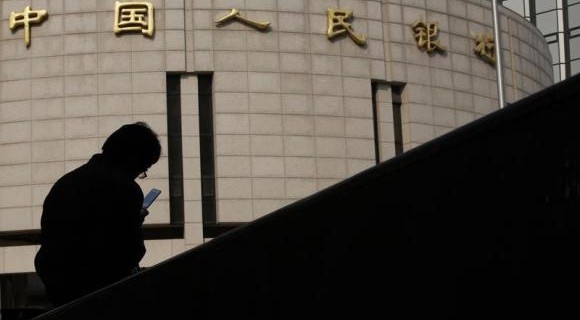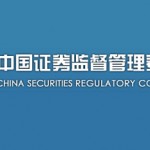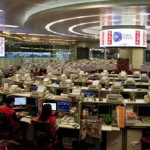Chinese Finance-Sector IPOs Set to Maintain Strong Presence in 2016

After dominating in Hong Kong this year, more Chinese finance-sector IPOs are expected to come to market next year
China’s banks and brokers have had a tough year with rising bad loans, a stock market crash and weak share performance. But they dominated initial public offerings in Hong Kong this year and more are expected to come to market in 2016.
The driving force behind the IPOs is a need by the banks and brokers to raise capital, either to expand in areas like margin lending during the stock market boom, or to clean up weakening balance sheets.
“We are seeing a lot of finance sector IPOs based on their funding needs,” said Louis Lau,a partner with KPMG’s Capital Markets Advisory Group, who believes the IPOs will get done. “Investors’ lack of confidence is only temporary,” he said.
In 2015, 10 Chinese banks and brokers raised nearly US$15 billion through Hong Kong IPOs, accounting for almost half of all share offerings, according to Dealogic data. It was the biggest year for finance IPOs in Hong Kong since 2010, and the listings helped drive the city to the top of the global IPO charts, according to Dealogic.
Next year appears to be stronger. At least 10 financial IPOs worth as much as US$30 billion are on track for 2016, according to published reports and people familiar with the matter.

Among the big deals on tap are a US$10 billion float for Postal Savings Bank of China,which announced Wednesday it raised 45.1 billion yuan (US$7 billion) from 10 strategic foreign and domestic investors. Peer-to-peer lender Lufax is planning to raise up to US$5 billion while China’s sixth-largest brokerage by assets, China Merchants Securities Co., hopes to raise US$4 billion, according to people with knowledge of the deals.
A number of other brokerage firms, insurers and leasing companies are also planning to list in Hong Kong next year, people with knowledge of the deals said.
The amount of money raised by financial companies isn’t a sign of their popularity. The Hang Seng China H-Financials Index is down 17% this year, underperforming the market, which has dropped about 8%.
Banks face tighter profit margins and higher capital pressure after China liberalized deposit and lending rates. Nonperforming loans are expected to rise further as the economy slows and Chinese companies and local governments work through a mountain of debt.
Goldman Sachs said in a portfolio strategy research note this week it will underweight banks in 2016, because “the sector is trading at record-low valuations, slowing margin growth and further easing of monetary policy will likely pressure top-line growth, net interest margin and provisioning charges.”
Many of the IPOs got help from so-called cornerstone investors, which take stakes in the company before the offering and agree to hold them for a certain period after the shares start trading.
Bank of Qingdao, the largest city commercial lender in eastern China’s Shandong province, set a record in late November with 72% of its US$607 million IPO coming from cornerstone investors. A month earlier, state-owned “bad bank” China Huarong Asset Management Co. scored the previous record with 70.4% of its US$2.3 billion float backed by such investors.
One constraint on the offerings is an unwritten rule in the IPO market that Chinese state-owned companies can’t sell shares at a price below their book value per share. However, their peers—such as China’s largest lender Industrial & Commercial Bank of China—are trading below or around that price, making it difficult for IPOs to attract investors at the offering prices.
Brokerage firms told a more dramatic story with this year’s two largest IPOs. The offerings included the best and worst market debuts, as they rose and fell together with China’s stock market. A number of them were hoping to expand their margin-financing business, which was fueling trading volumes in China’s soaring stock markets in the first half of the year.
While the Chinese stock market was booming, Huatai Securities Co. Ltd. raised nearly US$5 billion in an IPO in May—an amount much larger than the firm initially planned, according to bankers who worked on the deal, as investors embraced the surge of China stocks.
Shares of Huatai’s peer company, GF Securities Co. Ltd., jumped 35% on its Apr. 10 debut, after raising US$4.1 billion in this year’s second-largest IPO.
When the stock market crashed in June, Beijing halted all domestic IPOs and began a crackdown that included the brokers.
As a result, a few sizable listings, including ones for deal maker China International Capital Corp. and Everbright Securities Co, were delayed. CICC had to cut the size of the float later in the year. Brokerage Guolian Securities Co. Ltd. did list its shares, but they fell 31% on their debut day and are down 38% since the IPO.
Everbright Securities, which earlier aimed to list in the fourth quarter, only filed the IPO application Wednesday, pushing its likely listing date to the end of the first quarter.
Two other segments of the industry, insurance and financial technology, are likely to offer listings, which could be more popular with investors since they are less exposed to macroeconomic risks and fit into China’s increasingly consumer-driven economy, bankers say.
Source: WSJ – Chinese Finance-Sector IPOs Set to Maintain Strong Presence in 2016




























